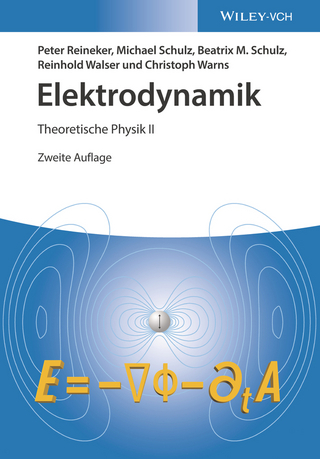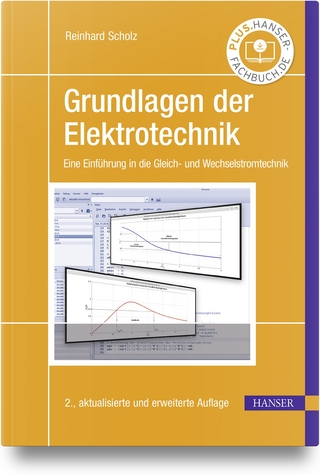Nuclear Magnetic Resonance Studies in Lyotropic Liquid Crystals
Springer-Verlag Berlin and Heidelberg GmbH & Co. K
978-3-540-07303-1 (ISBN)
Lese- und Medienproben
- Titel ist leider vergriffen;
keine Neuauflage - Artikel merken
It is the purpose of this review to consolidate the results obtained from nuclear magnetic resonance studies of such systems and to provide a coherent picture of the field. Probably the most familiar example of a lyotropic liquid crystal is soap in water. A common soap is sodium dodecylsulphate where an ionic group (sulphate) is attached to a hydrocarbon chain containing twelve carbons.
I. Introduction.- 1. Lyotropic Liquid Crystals.- 2. Basic Principles.- 2.1. Spectra of Lyotropic Phases.- 2.1.1. Nuclei with Spin I = 1/2.- 2.1.2. Nuclei with Spin I > 1/2.- 2.2. Spectra of Molecules Dissolved in Nematic Lyotropic Phases.- 2.2.1. The Hamiltonian.- 2.2.2. Direct Coupling and Degree of Order.- 2.2.3. Interpretation of the Dipolar Couplings and Obtainable Structural Information.- 2.2.4. Chemical-shift Anisotropy.- 2.2.5. Anisotropic Contribution of the Indirect Spin-spin Couplings.- 2.2.6. The Quadrupole Interaction.- 3. Experimental.- 3.1. Preparation of Samples.- 3.2. NMR Measurements.- 3.2.1. Phases without Additional Solutes.- 3.2.2. Solutes Dissolved in Nematic Phases.- II. Studies of Lyotropic Liquid Crystals.- 4. Introduction.- 5. Applications.- 5.1. Critical Micelle Concentration.- 5.1.1. Chemical-shift Measurements.- 5.1.2. Spin-lattice Relaxation Time Measurements.- 5.2. Spectral Changes and Phase Transitions.- 5.3. Proton and Deuteron Magnetic Resonance in Hydrated Fibrous Materials.- 5.4. Self-diffusion in Lyotropic Liquid Crystals.- 5.5. Interactions of Ions in Anisotropic Media.- 5.5.1. Ordering of Spherical and Tetrahedral Ions.- 5.5.2. Ion Binding and Ion Competition.- 5.5.3. Halide Ions.- 5.5.4. Alkali Ions.- 5.5.5. Proton, Deuteron and Alkali Resonance Studies.- 5.5.6. PMR of Nonionic Surfactants in the Presence of Anionic Surfactants.- 5.5.7. 14N Quadrupole Interactions.- 5.6. Alkyl Chain Motion in Lyotropic Liquid Crystals.- 5.6.1. The Concept of the Order Parameter as Applied to the Hydrocarbon Chain.- 5.6.2. Structure and Dynamics of the Hydrocarbon Region.- 5.6.2.1. Micellar Solutions.- 5.6.2.2. Anisotropic Phases.- 5.7. Sonicated Lamellar Systems.- Appendix to Part II: Systems Reported.- III. Studies of Molecular and Ionic Species Dissolved in the Nematic Phase of Lyotropic Liquid Crystals.- 6. Introduction.- 7. Applications.- 8. Order in Nematic Lyotropic Phases.- 8.1. Some General Comments Concerning the Order Parameter.- 8.2. Molecular and Ionic Species in Aqueous Phases.- 8.2.1. Benzenes and Related Compounds.- 8.2.2. Ionic Species as Solutes.- Appendix to Part III. Compounds Studied and Information Derived.- Acknowledgements.- References.
| Reihe/Serie | NMR Basic Principles and Progress ; 9 |
|---|---|
| Zusatzinfo | biography |
| Verlagsort | Berlin |
| Sprache | englisch |
| Gewicht | 180 g |
| Themenwelt | Naturwissenschaften ► Chemie |
| Naturwissenschaften ► Physik / Astronomie ► Elektrodynamik | |
| Technik ► Elektrotechnik / Energietechnik | |
| ISBN-10 | 3-540-07303-5 / 3540073035 |
| ISBN-13 | 978-3-540-07303-1 / 9783540073031 |
| Zustand | Neuware |
| Haben Sie eine Frage zum Produkt? |
aus dem Bereich



